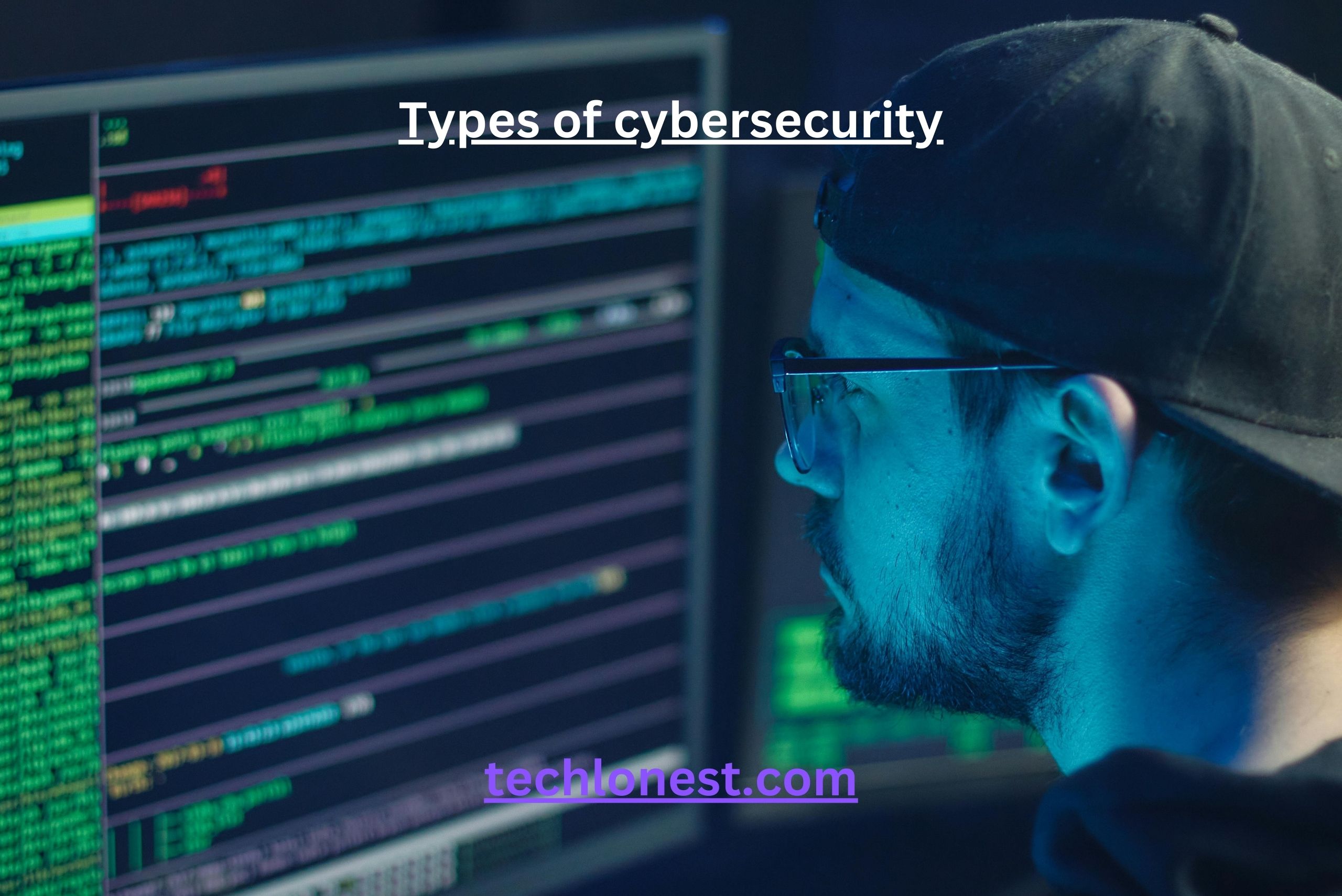In today’s virtual age, cybersecurity has become a critical component for individuals and corporations alike. From defensive personal facts to safeguarding countrywide security, it is important to know the numerous varieties of cybersecurity. This article delves into the exceptional aspects of cybersecurity, offering a step-by-step manual that will help you confidently navigate this complex discipline and Types of Cybersecurity.
What is Cybersecurity?
Before diving into the kinds of cybersecurity, it’s vital to understand what cybersecurity includes. Cybersecurity refers back to the practices and technology designed to protect computers, networks, packages, and records from unauthorized get entry, attacks, or harm. It contains a huge variety of sports geared toward ensuring the confidentiality, integrity, and availability of statistics.
The Importance of Cybersecurity
Imagine you’re the owner of a small business. One day, you find out that sensitive purchaser facts have been stolen because of a cyberattack. The fallout can be devastating, main to monetary loss, reputational harm, and criminal results. This state of affairs underscores why know-how in the forms of cybersecurity is crucial for all of us, no longer simply tech professionals.
Types of Cybersecurity
Cybersecurity is a wide subject, encompassing various types that cope with exceptional factors of digital safety. Let’s explore the number one kinds of cybersecurity and how they make contributions to a secure virtual environment.
1. Network Security
Network Security entails defensive the integrity, confidentiality, and accessibility of data and sources inside a community. It encompasses hardware and software technology that shield the community from unauthorized get right of entry to, attacks, and different threats.
Key Components:
- Firewalls: Act as boundaries between depended on and untrusted networks.
- Intrusion Detection Systems (IDS): Monitor community traffic for suspicious sports.
- Virtual Private Networks (VPNs): Secure connections over public networks.
Anecdote: Consider a company that uses a sturdy network protection gadget. One day, an attempt to breach their network is detected through the IDS, allowing the business enterprise to thwart the attack earlier than any data is compromised.
2. Information Security
Information Security makes a speciality of protective the facts itself, no matter its format or where it resides. This consists of safeguarding information from unauthorized access, disclosure, alteration, or destruction.
Key Practices:
- Data Encryption: Converts information right into a secure format.
- Access Controls: Restrict who can view or use data.
- Data Masking: Hides touchy information in non-production environments.
Step-by using-Step Guide to Implementing Information Security:
- Assess Data Sensitivity: Identify which information requires safety.
- Choose Encryption Methods: Select suitable encryption requirements.
- Implement Access Controls: Define consumer roles and permissions.
- Monitor and Audit: Regularly review access logs and safety features.
3. Application Security
Application Security entails measures taken to enhance the safety of programs by finding, solving, and stopping security vulnerabilities. It spans the whole development lifecycle, from design to deployment.
Key Strategies:
- Secure Coding Practices: Write code this is resilient to assaults.
- Regular Updates and Patches: Keep software up-to-date to restoration vulnerabilities.
- Application Firewalls: Protect packages from not unusual threats like SQL injection and cross-site scripting.
Anecdote: A popular mobile app frequently updates its software program to patch vulnerabilities, making sure customers’ statistics stays steady against rising threats.
4. Endpoint Security
Endpoint Security focuses on defensive man or woman gadgets that hook up with a network, together with computer systems, smartphones, and capsules. Each tool serves as a ability access point for cyber threats.
Key Measures:
- Antivirus Software: Detects and gets rid of malicious software.
- Device Encryption: Protects facts saved on gadgets.
- Mobile Device Management (MDM): Controls and secures cell devices used inside an agency.
5. Cloud Security
With the rise of cloud computing, Cloud Security has come to be crucial. It includes protecting data, applications, and services hosted within the cloud from various threats.
Key Elements:
- Identity and Access Management (IAM): Ensures best legal users can get admission to cloud sources.
- Data Encryption: Secures information saved and transmitted within the cloud.
- Security Monitoring: Continuously monitors cloud environments for suspicious activities.
Step-by-Step Guide to Enhancing Cloud Security:
- Identify Critical Assets: Determine which records and packages are saved inside the cloud.
- Implement IAM: Set up sturdy authentication and authorization protocols.
- Encrypt Data: Ensure all sensitive records is encrypted.
- Regular Audits: Conduct periodic safety assessments of cloud services.
6. Operational Security (OpSec)
Operational Security (OpSec) entails the regulations and methods that dictate how records is controlled and protected inside an organisation. It encompasses everything from worker schooling to incident reaction strategies.
Key Practices:
- Employee Training: Educate team of workers approximately cybersecurity exceptional practices.
- Incident Response Plans: Develop techniques to address safety breaches.
- Regular Audits: Assess and improve safety features constantly.
7. Disaster Recovery and Business Continuity
Disaster Recovery focuses on restoring records and structures after a cyber incident, whilst Business Continuity guarantees that vital capabilities preserve all through and after a disaster.
Key Steps:
- Backup Solutions: Regularly returned up vital information.
- Recovery Plans: Outline steps to repair systems quickly.
- Business Impact Analysis: Identify and prioritize vital enterprise capabilities.
8. Identity and Access Management (IAM)
IAM is the framework that guarantees the proper people have get admission to to the right resources on the proper instances for the proper motives. It entails dealing with consumer identities and controlling get right of entry to to sources.
Key Components:
- Single Sign-On (SSO): Allows customers to log in once to get entry to a couple of structures.
- Multi-Factor Authentication (MFA): Adds additional layers of security past simply passwords.
- Role-Based Access Control (RBAC): Grants get right of entry to based totally on user roles within an company.
Choosing the Right Cybersecurity Measures

Selecting the proper kinds of cybersecurity measures relies upon on various factors, along with the scale of your corporation, the nature of your facts, and the precise threats you face. Here’s a step-by using-step guide that will help you make informed choices:
Step 1: Conduct a Risk Assessment
Identify ability threats and vulnerabilities that could effect your systems and information. Understanding your risk landscape is vital for prioritizing cybersecurity measures.
Step 2: Define Your Security Goals
Determine what you purpose to defend and set clear targets. This may want to range from safeguarding patron facts to ensuring uninterrupted business operations.
Step 3: Implement Layered Security
Adopt a multi-layered technique to cybersecurity, combining various styles of cybersecurity measures to create a strong protection device.
Step 4: Train Your Team
Educate employees approximately cybersecurity best practices and the significance of their function in retaining protection.
Step 5: Regularly Update and Test
Continuously update your security features and behavior everyday tests to ensure their effectiveness against evolving threats.
Why Invest in Cybersecurity?
Investing in cybersecurity isn’t always pretty much stopping assaults; it’s about constructing accept as true with, keeping reputation, and making sure long-term success. With cyber threats becoming extra sophisticated, having a comprehensive cybersecurity approach is essential for any enterprise.
Benefits of Strong Cybersecurity:
- Protection of Sensitive Data: Safeguards client and business information.
- Compliance with Regulations: Meets legal requirements and avoids consequences.
- Business Continuity: Ensures operations can maintain easily throughout and after an incident.
- Customer Trust: Builds confidence amongst clients and companions.
Call to Action: Don’t wait until a cyberattack disrupts your enterprise. Invest in robust cybersecurity answers nowadays to guard your belongings and ensure peace of mind.
Frequently Asked Questions (FAQ)
1. What are the most not unusual forms of cyberattacks?
Common cyberattacks encompass phishing, malware, ransomware, denial-of-provider (DoS) assaults, and guy-in-the-middle (MitM) attacks. Each type goals different vulnerabilities and calls for specific cybersecurity measures to shield in opposition to.
2. How can I guard my personal facts on-line?
To protect your personal facts, use strong and particular passwords, enable multi-issue authentication (MFA), be cautious of suspicious emails or links, often replace your software program, and use legitimate antivirus programs.
3. What is the difference between cybersecurity and facts safety?
Cybersecurity specializes in defensive virtual structures, networks, and facts from cyber threats, while data protection includes a broader variety of practices geared toward defensive all styles of records, whether or not digital or physical.
4. Why is employee schooling crucial in cybersecurity?
Employees are regularly the first line of defense in opposition to cyber threats. Training ensures they understand and respond accurately to potential threats, reducing the risk of human blunders which can result in protection breaches.
5. What role does encryption play in cybersecurity?
Encryption converts records right into a secure layout that is unreadable with out the best decryption key. It protects sensitive data from unauthorized get entry to, ensuring statistics privateness and integrity.
6. Can small corporations have enough money strong cybersecurity measures?
Yes, small groups can enforce effective cybersecurity measures tailor-made to their needs and price range. Investing in scalable solutions like cloud security, antivirus software program, and worker education can provide significant protection with out breaking the financial institution.
7. How regularly need to I update my cybersecurity protocols?
Regular updates are essential to maintain up with evolving threats. It’s encouraged to check and replace your cybersecurity protocols at the least yearly, or extra regularly if there are considerable modifications to your IT surroundings or rising threats.
8. What is a firewall, and why is it vital?
A firewall is a safety tool or software program that monitors and controls incoming and outgoing community site visitors based on predetermined safety regulations. It acts as a barrier between relied on and untrusted networks, stopping unauthorized get admission to and capacity cyberattacks.
9. How does cloud security differ from traditional cybersecurity?
Cloud security mainly addresses the particular challenges of protecting records, applications, and offerings hosted within the cloud. It involves handling get admission to controls, records encryption, and non-stop monitoring tailored to cloud environments, whereas conventional cybersecurity focuses more on on-premises structures.
10. What are the important thing factors of a disaster healing plan?
A complete disaster recuperation plan consists of data backups, restoration methods, conversation plans, roles and duties, and ordinary trying out and updates to make certain structures may be restored quick and efficaciously after an incident.
Conclusion
Understanding the kinds of cybersecurity is essential in today’s interconnected world. From community safety to cloud security, every type performs a important role in shielding digital property in opposition to a myriad of threats. By enforcing a layered cybersecurity method, engaging in normal checks, and staying informed about the modern-day threats, you may safeguard your information and ensure the resilience of your operations.
Investing inside the right cybersecurity measures no longer most effective protects your information but additionally builds accept as true with with your customers and partners. Don’t anticipate a cyberattack to focus on vulnerabilities—take proactive steps today to stable your digital destiny.
Take Action Now: Equip your self with the expertise and gear to guard towards cyber threats. Explore our variety of cybersecurity answers and put money into a more secure, extra steady digital environment in your enterprise.
